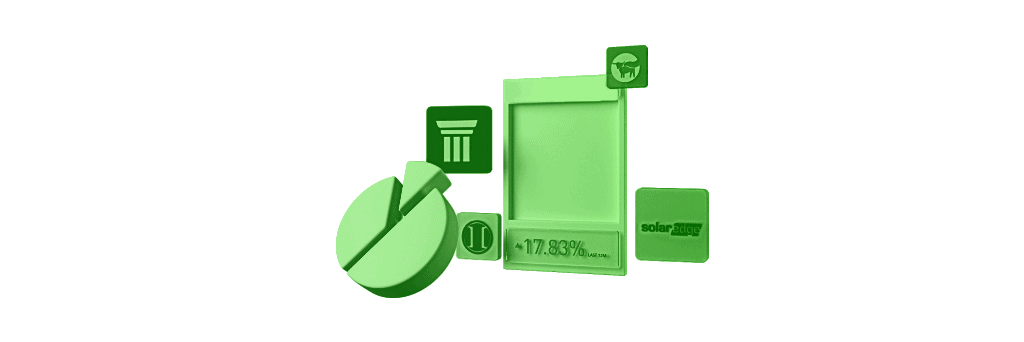For those considering investing, its important to first understand a few key terms. These allow you to appreciate how the markets and trading work, so you can form a strategy and make decisions that are beneficial to your long-term goals.
Forming part of this core terminology are two words: margin and leverage. Margin is a way for investors to increase their buying power, which can be beneficial for those whose budgets are modest. While it can increase profit, theres also a greater degree of risk inherent in it.
Perhaps youre also wondering what does leverage mean in trading? The two terms are often used interchangeably. They both refer to ways to open a trading position with a broker using only a small amount of capital to take up a large position.
The use of these terms can be confusing for amateur investors and those whove yet to enter the markets. However, with this guide, you should soon develop a much better understanding of them.
Table of Contents
How Does Margin Relate to Leverage?
Which Instruments Can I Apply Leverage To?
What Can I Do to Minimise Risk When Trading with Leverage?
What Are the Fees for Trading with Leverage?
What is Leverage?
So, what does leverage mean? In ordinary parlance, to leverage is to use something to maximum advantage. Its meaning in the financial world is not so dissimilar: youre taking the funds you have and using leverage to optimise your earning potential.
If you were looking for a simplified leverage meaning or leverage definition, you might summarise it thus: as a way to take a small amount of money and increase its value on the investment markets.
Examples are often the easiest way to explain this kind of concept. Imagine you have ?1,000 to trade but want to increase your potential return. You find a broker offering leverage at 25:1. With their backing, you could manage a position of up to ?25,000 by placing a deposit of ?1,000.
What is Margin?

Above, we said leverage and margin are two terms that are often used interchangeably. This is true, but we should qualify it by explaining that the two do have slightly different meanings.
If youre searching for a margin meaning, this is the amount of money youll need to open your position, while leverage is the multiple of exposure. If youd like to know how to calculate margin, work out the size of your intended position and then divide this by the higher number.
Lots of brokers will have a margin calculator on their page, but this is usually easy enough to work out in your head. In the example we used above, our hypothetical broker wanted to trade ?25,000 with leverage of 25:1. The margin formula theyd need to use would therefore be:
?25,000 / 25 = ?1,000
Equally, if the leverage was 5:1, theyd have to put down ?5,000 to manage the same size position. The formula in this instance would be:
?25,000 / 5 = ?5,000
Essentially, this means you work out the margin in the following way:
Size of position / the higher figure in the ratio = the margin.
When buying on margin, the size of your deposit will depend on the leverage offered and the trading terms supplied by the broker. This payment is known as the initial margin. Margin requirements can differ widely depending on factors like the asset type, market, and risk involved.
How Does Margin Relate to Leverage?
Weve largely covered this question above, but let us go into a little more detail here. Margin is, essentially, a special type of leverage that involves using existing cash or securities positions as collateral. This increases the traders buying power.
This ability is not limitless. If traders have taken on too much risk, brokers may put them on a margin call or implement a stop-out.
Lets look at these two concepts individually:
Margin Call
A margin call occurs when an investors balance and unrealised profit and loss are equal to their margin requirement. The broker will demand they deposit additional funds to bring their account up to the minimum value.
Stop-out
A stop-out, on the other hand, is the point where a traders equity is equal to half their required margin. If you have trading positions open but lack the equity to cover these, the trading platform will automatically close them. This is implemented as part of the FCAs product intervention measures.
How Does Leveraging Work?
So, how does leverage work? This is a strategy that involves borrowing funds to increase the return on investments. If the return is higher than the interest owed, you can make a healthy profit, which is why investors utilise it.
Using the TBanque platform, you must decide whether you wish to use leverage or not. Theres no onus on you to do so. Different instruments will have various maximum leverage amounts. By law, these must not exceed a certain number.
You can use a leverage multiplier to enhance your buying power. This will often be in the form of a ratio, such as 10:1, 20:1, and so on. This is the number of times your capital will be amplified.
If youre wondering what is leverage ratio and how you calculate the leverage ratio formula, this is easy. The smaller figure relates to the money you put down; the larger, to how much the broker will amplify this by. So, if the ratio is 10:1 and you deposit ?1,000 in your account, the broker will increase this amount to ?10,000.
Leveraged Buyout and Stop Loss
This works in a not dissimilar way to a leveraged buyout.What is a leveraged buyout? Where one company acquires another using a significant amount of borrowed money. Youre essentially doing the same to secure a larger position.
To minimise the potential risks when using financial leverage, you can utilise something known as a stop loss. This allows you to automatically close your position if you lose a certain amount. We also offer a maintenance margin feature that acts as an additional safety net. You can find more on this here.
To use leverage on our platform, youll need to do the following:
- Select the asset youre interested in and click trade.
- Choose whether you want to sell or buy.
- Set the amount of capital you want to invest and your leverage multiplier. If you dont wish to use leverage, you can choose 1x.
- Set stop loss and take profit parameters.
- Click set order.
Which Instruments Can I Apply Leverage To?

Leverage can be used to acquire several different instruments, including commodities, currencies, ETFs, indices, stocks, and in some instances crypto.
Different instruments will have different leverage limitations, which will be determined by industry regulations and the discretion of the broker youre trading with.
For example, if you want to leverage ETF or leverage shares, the amounts may vary significantly from the maximum stock leverage youre offered.
Examples of Leverage
We included a few examples above, but lets consider a couple more in case youre still asking how do you calculate financial leverage ratio?.
Lets say you want to trade a EUR/USD currency pair at a ratio of 30:1. If you had ?1,000 to trade, this would allow you to manage a position of ?30,000.
Equally, if you wanted to trade a commodity like gold with leverage of 10:1 and you had ?500 to spend, this would allow you to manage a position of ?5,000. Thats because for every pound you deposited, the broker would contribute a further ?10.
If in these situations you chose not to use leverage, youd be able to open positions of ?1,000 and ?500 respectively.
What Can I Do to Minimise Risk When Trading with Leverage?

There are advantages and disadvantages of leverage. While trading with it can have upsides, its important to be aware of the risks it poses. As profits can be increased, so too can losses, which is why you should utilise certain tools to limit any damage.
When assessing your leverage risk, try to put a risk management process or risk management framework in place. This should incorporate tools such as:
- Stop losses. Use these to automatically close trades when losses reach a certain amount.
- Take profit orders. Use take profit orders to automatically close positions when they reach a specified value.
- Negative balance protection. In some cases, brokers such as TBanque will provide negative balance protection to guard against market conditions that cause equity to fall to zero. This means they absorb the loss on your behalf.
Used in combination, these tools should allow you to manage your level of risk.
What Are the Fees for Trading with Leverage?
This will depend on several factors, but youll always be made aware of fees before you place an order. You can find more detailed information on this here.
Conclusion
When it comes to using leverage, this can have many upsides, allowing you to significantly increase your profits when trades pan out as you wish them to.
However, it would be foolish not to acknowledge the increased risks attached to it, which is why you should always take advantage of the available tools to mitigate potential losses.
Increase your knowledge and understanding today to give yourself the best possible chance of trading successfully. With TBanque, you have everything you need ready and waiting at your fingertips.
This information is for educational purposes only and should not be taken as investment advice, personal recommendation, or an offer of, or solicitation to, buy or sell any financial instruments. This material has been prepared without regard to any particular investment objectives or financial situation and has not been prepared in accordance with the legal and regulatory requirements to promote independent research. Any references to past performance of a financial instrument, index or a packaged investment product are not, and should not be taken as a reliable indicator of future results. TBanque makes no representation and assumes no liability as to the accuracy or completeness of the content of this guide. Make sure you understand the risks involved in trading before committing any capital. Never risk more than you are prepared to lose.